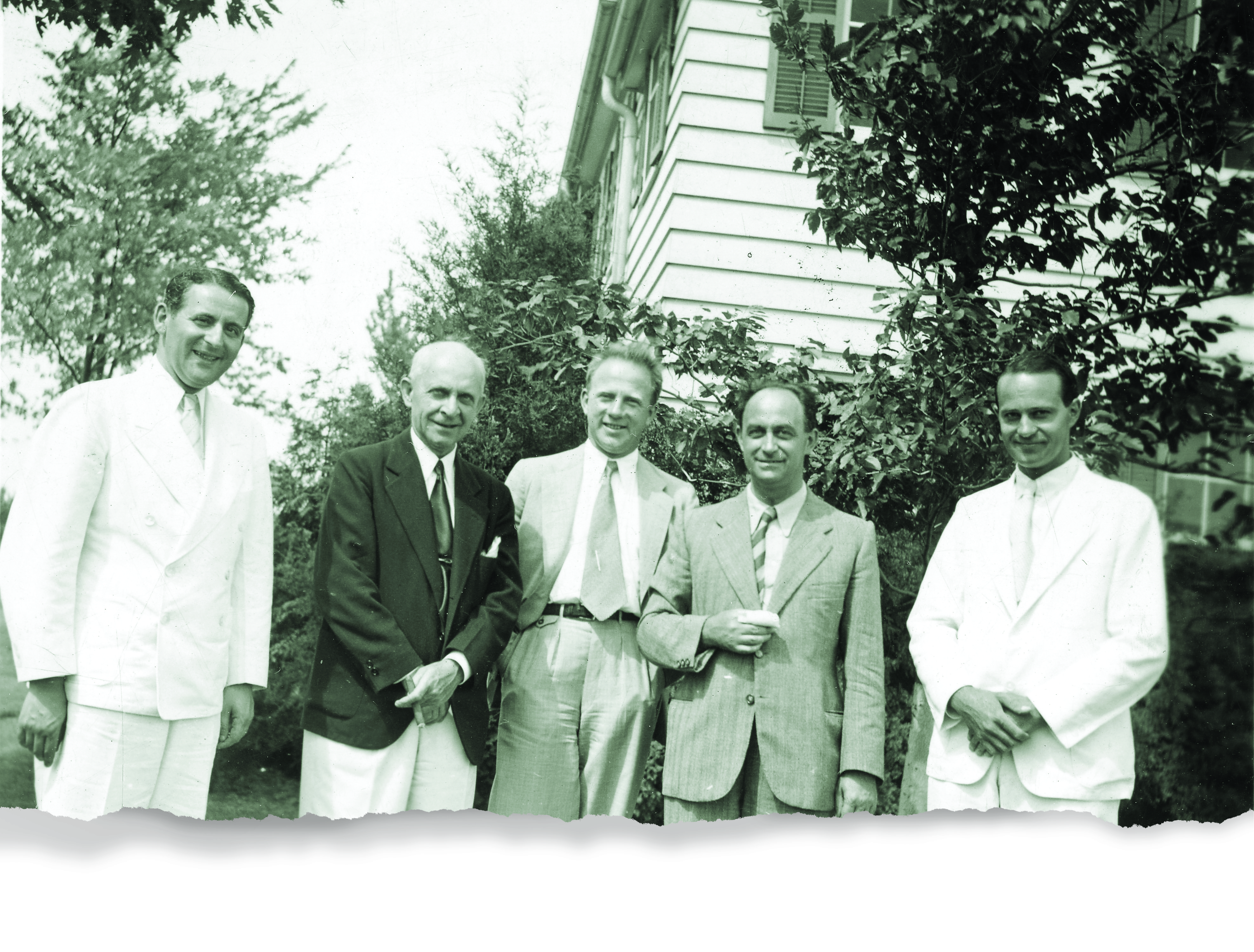In his first venture into writing an extended historical narrative, science writer Sam Kean does a bang-up job telling a story of war and physics in World War II. The Bastard Brigade chronicles the British and American campaigns to thwart the Nazis’ quest to develop an atom bomb. Driven by a fear that Germany’s efforts were just as far—or even further—along than the Manhattan Project, this was a serious, if not desperate, undertaking.
Kean’s sprawling story begins in the days well before the war, when the world’s greatest physicists could still consider themselves part of one profession no matter which countries they called home. It then moves into a period of uncertainty as World War II begins and expands—and, after rumors of German progress cross the Atlantic, transitions to the Allies’ initiatives to stop the German nuclear program at all costs by means fair and foul.
Kean succeeds in weaving these strands of sabotage into a coherent narrative. He takes a largely biographical approach, telling his tale through the lives of scientists, spies, and saboteurs. Central figures include German theoretical physicist and Nobel Prize winner Werner Heisenberg; the quirky yet brilliant French chemists Irène and Frederic Joliot-Curie; Morris “Moe” Berg, the major league baseball player who morphed into an eccentric but effective secret agent; Boris Pash, the Russian expatriate-turned-U.S. Army colonel sent to Europe to track down German scientists; and the incredibly brave British and Norwegian commandos who parachuted into the frozen north to sabotage the heavy water plant at Vemork in Nazi-occupied Norway.
Kean also tells the tragic story of Joseph P. Kennedy Jr., the brother of America’s future president. In 1944, the 29-year-old volunteered to fly a virtual suicide mission against mysterious concrete emplacements in Nazi-occupied France that turned out to be for projectiles tipped with conventional explosives. It is a tale of courage and loss—but not one most authors would include in a book about nuclear history. Kean even concedes that “[n]o firm evidence” ever linked Kennedy’s target with the German atomic bomb—but he still goes on to unconvincingly argue that “there were always allusions, whispers, and once people started associating the two in their minds, the idea continued to fester.”
At times Kean seems to want the reader to believe that there was a more or less concerted campaign to sabotage the Nazi bomb—“a series of desperate missions,” as he phrases it. True, General Leslie Groves was indeed the linchpin of America’s nuclear race against Germany, serving as impetus for many initiatives that Kean describes—the bombing raids; the sabotage operations; even plots to interrogate, kidnap, or kill physicists in occupied Europe. To a lesser extent, the same was true of Winston Churchill and his Special Operations Executive. But it is hard to escape the conclusion that reality was a good deal messier than Kean implies, and that there was often limited coordination among efforts to sabotage the Nazi bomb. As Kean himself shows, the various operations indeed sometimes competed against one another, as when two different groups of Americans targeted the same enemy scientists or when the second failed commando raid on Vemork destroyed what he describes as “the remaining goodwill between American and British officials working in atomic intelligence.”
Kean’s style is breezy and readable, with an engaging command of narrative—no easy feat, considering the story’s many twists and turns. He makes good use of details gleaned from both primary and secondary sources including memoirs, biographies, and histories. That said, it is hard to know which sources ultimately served him best; with no footnotes and only a general list of Kean’s most salient reference materials, history buffs who want to dig deeper might feel a twinge of frustration.
A key question that Kean does not fully answer until the book’s end is just how far along the Nazis actually were in creating an atomic bomb. Certainly the Germans had some of the finest scientific minds, like Heisenberg, and access to necessary raw material, like Norway’s heavy water. But following Germany’s surrender in May 1945, it turned out that Hitler’s scientists had nothing even remotely comparable to the Manhattan Project: seized records, equipment, and personnel revealed that their effort comprised a handful of poorly coordinated and underfunded research initiatives. In the end, the Allies didn’t need to sabotage a German bomb after all. But with the war against Japan still raging, there was little time for Groves and his men to sigh with relief; they needed to continue perfecting their own bomb.
It was a mark of the moral confusion of Heisenberg and some of his colleagues that, at the end of the European war, their regret was not that they had worked for the Third Reich but that someone else had beaten them at their game. They never seemed to have grasped that they were doing the devil’s handiwork—and that it was far, far better for civilization that they had never came close to succeeding. ✯
—Nicholas Reynolds, the author of Writer, Sailor, Soldier, Spy: Ernest Hemingway’s Secret Adventures, 1935-1961, wrote the story on OSS maverick Carl Eifler for the August 2019 issue.
This article was published in the December 2019 issue of World War II.





